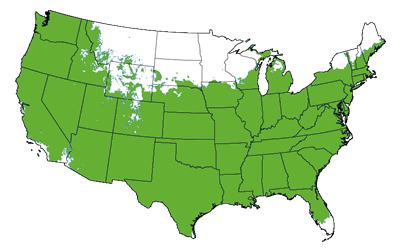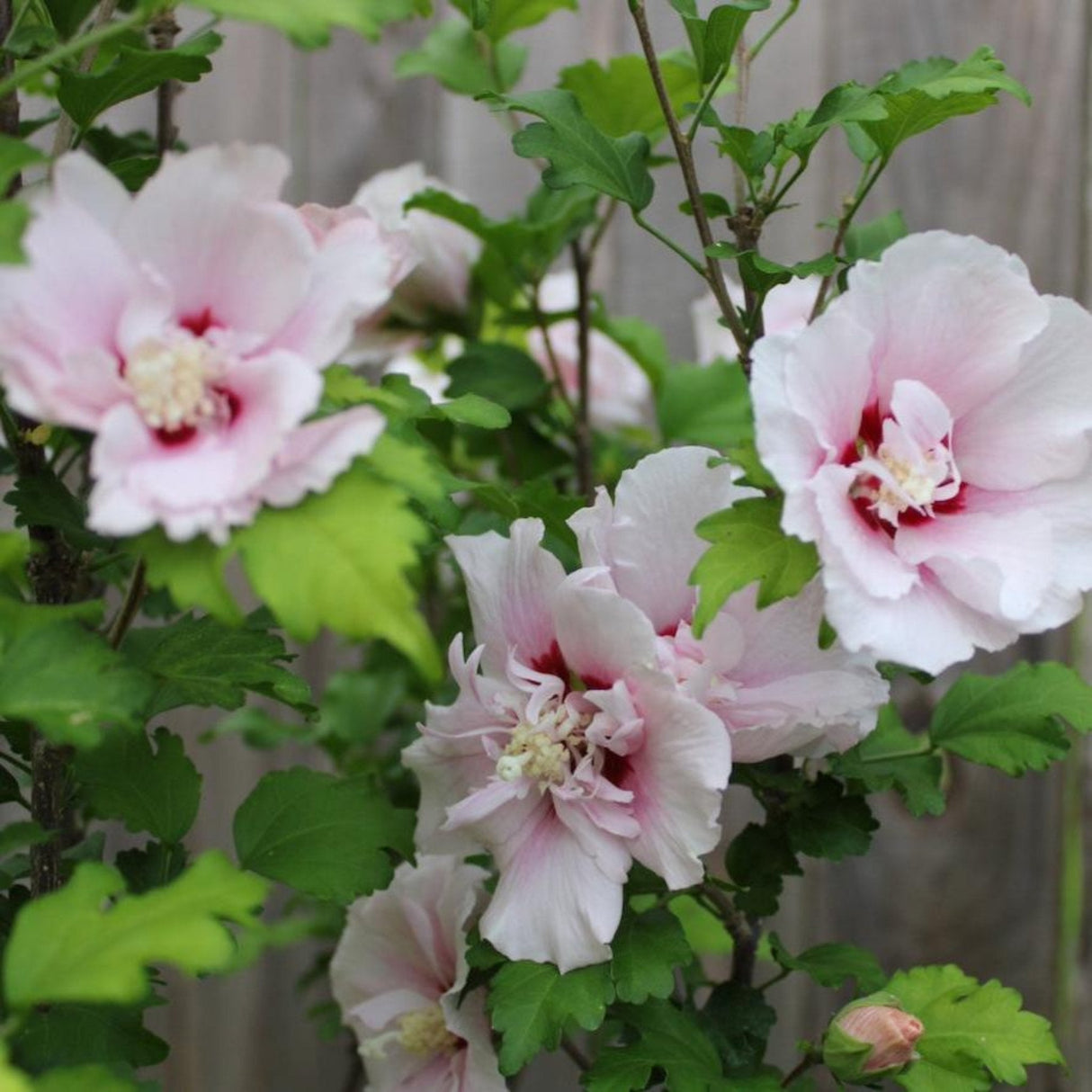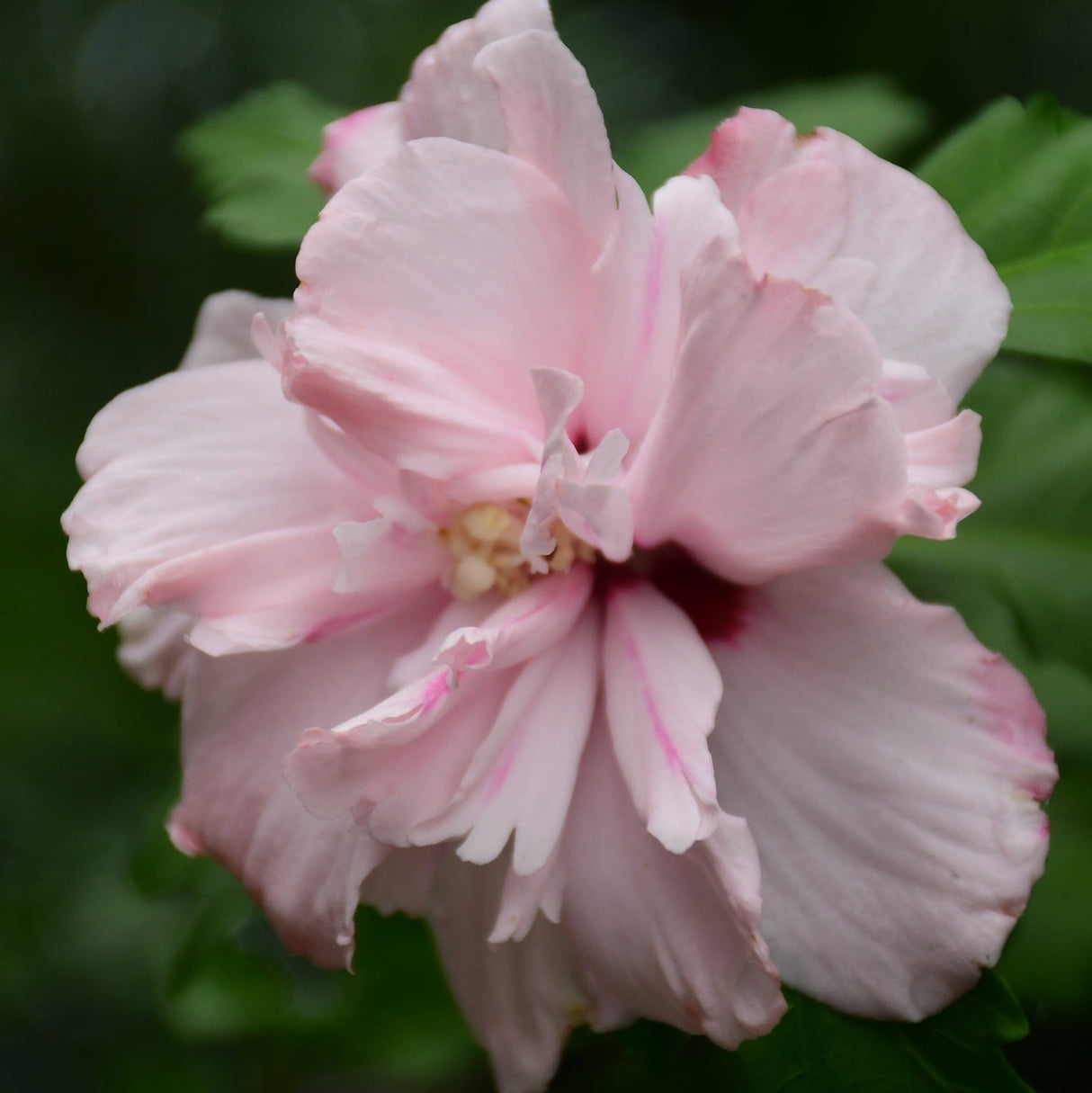Double Pink Rose of Sharon Tree
Plant Health Guaranteed
Your Plants are Guaranteed
Your Plants are Guaranteed
Your plants are guaranteed to arrive happy & healthy with our 30 Day Plant Promise. Your order will arrive healthy and stay healthy while they adapt to your climate. If not, just call us at (704) 443-8256.
Free Shipping on All Orders
Free Shipping on All Orders
Free shipping on all orders. Your plants will ship out the next business day... expertly packed so that your plants will arrive happy and healthy!
Planting & Care
Planting & Care
|
The Double Pink Rose of Sharon Tree thrives in Zones 5-9 
If you live in the green area above, we recommend the Double Pink Rose of Sharon Tree. |
||
| Your Growing Zone | ||
| Recommended Zones | 5-9 | |
| Mature Height | 6-10 ft. | |
| Mature Width | 6-10 ft. | |
| Cannot Ship To | AZ, OR | |
| Sunlight | Full to Partial Sun | |
| Botanical Name | Hibiscus syriacus 'Double Pink' | |
|
The Double Pink Rose of Sharon Tree thrives in Zones 5-9 
If you live in the green area above, we recommend the Double Pink Rose of Sharon Tree. |
|
| Your Growing Zone | |
| Recommended Zones | 5-9 |
| Mature Height | 6-10 ft. |
| Mature Width | 6-10 ft. |
| Cannot Ship To | AZ, OR |
| Sunlight | Full to Partial Sun |
| Botanical Name | Hibiscus syriacus 'Double Pink' |
Description
Description
Double Pink Rose of Sharon Tree - Elegant Ruffled Pink Blooms for a Stunning Landscape
The Double Pink Rose of Sharon Tree (Hibiscus syriacus) is a breathtaking addition to any garden, offering lush, double-layered pink blossoms that bloom from late summer into fall. With its upright, vase-like form, this small ornamental tree brings an elegant touch to your landscape, patio, or garden bed. The soft, rose-pink flowers feature a ruffled appearance, adding a touch of luxury and charm wherever it’s planted. Whether as a focal point or part of a garden border, the Double Pink Rose of Sharon adds beauty and sophistication to any outdoor space.
This hardy tree is loved not only for its stunning blooms but also for its ability to attract butterflies and hummingbirds, making it a pollinator-friendly choice for your garden. Its long bloom season ensures that you’ll enjoy months of vibrant color, even when many other plants have stopped flowering. With its easy-to-care-for nature, the Double Pink Rose of Sharon is perfect for homeowners looking to add low-maintenance beauty to their yard.
Why Choose the Double Pink Rose of Sharon Tree?
- Stunning double blooms: Gorgeous pink, ruffled flowers that bloom from late summer through fall.
- Attracts pollinators: Draws butterflies and hummingbirds, adding life and movement to your garden.
- Compact and versatile: Reaches 8-12 feet tall, ideal adding seasonal privacy along fences to small yards, including in garden beds, creating a feature corner for your yard or as a patio tree.
- Long-lasting color: Enjoy months of vibrant pink blooms, even late in the season.
- Low-maintenance: Thrives in a variety of soils and conditions, making it perfect for busy gardeners.
Planting and Care Tips for the Rose of Sharon
The Double Pink Rose of Sharon Tree thrives in USDA Hardiness Zones 5-9 and enjoys full sun to partial shade. Plant it in well-drained soil, and water regularly during its first year to establish a strong root system. Once established, it becomes fairly drought-tolerant, requiring less frequent watering. This tree can tolerate a variety of soil types, from sandy to clay, and is resistant to pests and diseases, making it a hardy and reliable addition to your garden.
Pruning in late winter or early spring will encourage bushier growth and a more abundant bloom display. The tree’s natural vase-like shape makes it a stunning focal point, but it can also be trimmed into a hedge or used in borders.
Enhance Your Yard with the Double Pink Rose of Sharon Tree
Transform your garden with the Double Pink Rose of Sharon Tree, a stunning addition that brings elegance to any landscape. With its gorgeous layered pink blooms, this tree adds vibrant color and charm, blooming all summer long. Not only is it a showstopper, but it’s also easy to care for and drought-tolerant, making it perfect for gardeners of all skill levels.
Don’t wait—enhance your outdoor space today with shipping available on the Double Pink Rose of Sharon Tree!




